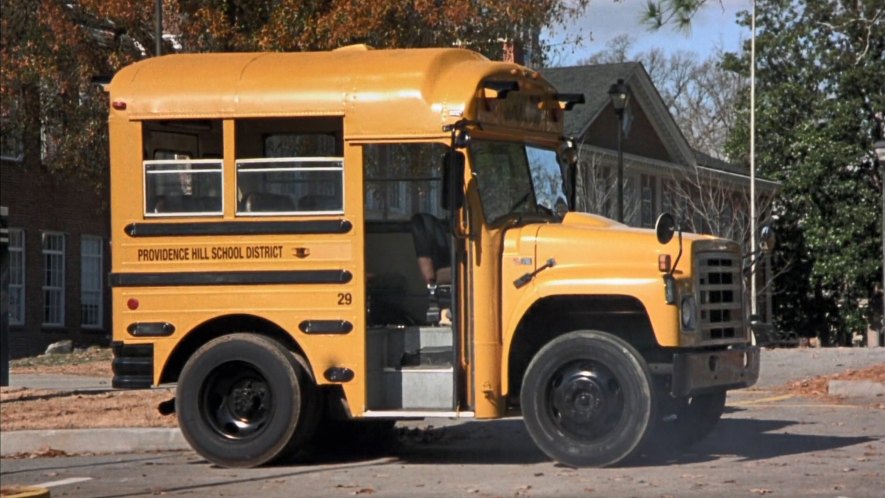Hi
dwh,
Many thanks for answering my question about school buses. Really interesting. It would be great to see a schematic, or cross-section, or chassis-frame plan -- something
visual -- that shows what you just described. If you ever come across an image or schematic, please post! And the same for anyone else reading this, who loves "skoolies", i.e. school bus conversions.....

As it is, on the Bluebird website there does not seem to be anything
visual that describes the internal construction of their school-buses, other than the kinds of pictures already posted above, which show a conventional ladder frame with two long rails. It seems that nowhere on its website does Bluebird advertise that its buses have a "semi-monococque" or "vertically integrated" design, a design in which the whole bus becomes a tubular space-frame that provides maximum rigidity. Whereas the Spartan and Prevost chassis discussed earlier in the thread explicitly mention exactly this, and they emphasize exactly this -- again, see posts #732 to #736, at
http://www.expeditionportal.com/for...pedition-RV-w-Rigid-Torsion-Free-Frame/page74.
So based on the purely
visual documentation for school buses posted in the thread thus far, it would seem that the ladder-frame just depicted above in a Bluebird bus is supposed to do all the work of maintaining rigidity. I would love to be proven wrong about this! But I would first need to be shown more weblinks to documentation, and/or more visual imagery, to be convinced otherwise.....:sombrero:
...(PS: the weblink that you posted does not seem to work, or it seems to be incomplete.)
*************************************************
For some nice videos about the virtues of torsion-free rigidity, this time in a much smaller vehicle, see the following clips about
American Expedition Vehicles' "Brute" Jeep conversions. Basically, AEV takes a Jeep chassis and lengthens it, to create a vehicle that has the same load-carrying capacity and off-road capability as a Landrover Defender 130 -- see
http://www.aev-conversions.com and
http://expeditionportal.com/show-stopper-aev-releases-aussie-inspired-ram-2500/ :
Brief note to
thjakits: I have been all over Rob Gray's website, so yes, I am fully and completely aware of how the
Wothahellizat's more traditional, flexing-frame + 3 point subframe works. Remember, I have been at this for a while.
In the
"Pivoting Frames and Mounting Campers" thread, from which this thread first originated about a year ago,
Ian_U1250 posted some interesting pictures of fully integrated Unimogs -- see post #324 at
http://www.expeditionportal.com/forum/threads/25494-pivoting-frames-and-mounting-campers/page33 . And, needless to say, the Unimog frame is deliberately designed to flex -- a lot. So sure, what you described is both theoretically and practically possible: a fully integrated design based on a chassis frame that flexes.
But the bigger the vehicle gets, perhaps the more troublesome a flexing frame will become, for a fully integrated, rigid camper box mounted on top? And if some kind of 3 or 4-point pivoting sub-frame were required after all, one loses precious cm of height and internal camper headroom to the sub-frame. In short, for all sorts of engineering
and overall design reasons, I think a rigid, non-flex chassis is the way to go. And that is what this thread is about. This particular sub-theme is very clearly stated in the thread's title,
"Rigid, Torsion-Free Frame".
Sorry to clamp down hard on this issue, but honestly, I personally
do not want to get into any kind of debate about
"rigid versus flexing frames". So yes, a flexible frame that mounts a fully integrated camper box
is a possibility, and has been done before. But it is a possibility that was closed off in this thread almost a year ago. And furthermore, it is a possibility that is also excluded by this thread's title. This may sound somewhat autocratic and too
dirigiste, but this thread wants to explore one and only one engineering possibility, at least as far as frames are concerned, namely,
"rigid, torsion-free frames".
That possibility
is worth exploring in detail, and at great length, if only because it has
not been explored much yet, in the world of large, expedition-style motorhomes. In the world of UniCat and ActionMobil vehicles, "flexing frames" are standard, and the engineering and design issues raised by mounting rigid camper boxes on top of flexing frames have been explored
ad nauseam. So for that reason alone, I personally
do not want to explore such issues in this thread.
Others may feel differently. But again, if a debate emerges on this subject, I definitely will not be a participant.....

All best wishes,
Biotect






















































